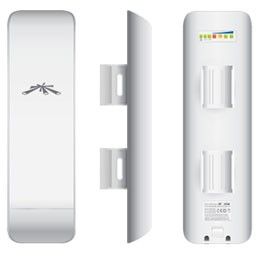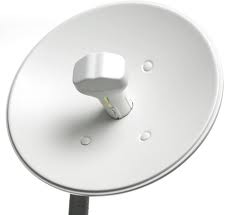Ubiquiti M2 Series – The Respective Babies of the Family

General Product Details
The Ubiquiti M2 Series was one of the companies newer attempts at revamping the wayoutdoor wireless networking was attacked by developing entirely new software and then building the hardware with nothing but style, durability and usability in mind. There are various operating differences between the M2 Series and later Series, primarily in the field of their operating frequencies, but this is something we will elaborate further on in the review.
Wireless Specification
Products associated with the M2 Series are classed as outdoor wireless routers which work on both n and g protocols supporting both on a 2.4 GHz frequency. If we are looking for precision the M2 Series actually supports a frequency range of 2412 to 2462MHz. Most, if not all products assigned to the M2 Series will have ample Ethernet connections due to their PoE compatibility.
Depending on the configuration of the device, data rates can vary from 1 up to a potential 54Mbps, but at the same time the average transfer rate (the average time for a packet to transfer from A to B) will also decrease. In any case, the tolerance of all n, b and g protocols results at +/- 2dB.
Deployment Details
 There are not standard dimensions for products in the M2 Series, as this greatly depends on their role; some products are bigger than the NanoStation which is pictured at the beginning of this article. In any case, all Ubiquiti products are designed with not only durability (for their outside roles) in mind but also a touch of style, and hence devices are finished in a matt white colour giving the series a sleek and shiny aesthetic.
There are not standard dimensions for products in the M2 Series, as this greatly depends on their role; some products are bigger than the NanoStation which is pictured at the beginning of this article. In any case, all Ubiquiti products are designed with not only durability (for their outside roles) in mind but also a touch of style, and hence devices are finished in a matt white colour giving the series a sleek and shiny aesthetic.
A uniform feature across the M2 Series is the fact no parts of it generally protrude from their casing, unless it is mounted on a dish for example. A further feature is the ability to attach any of the M2 Series products to either a mounting bracket or pole which can increase the altitude and therefore have an effect on the distance (especially in woodland) a person can connect to the network wirelessly.
The amount of power the devices in the M2 Series require to function, again greatly depends on its role however the general benchmark is around 8 Watts of power which is usually provided through the PoE (Passive over Ethernet) where you attach the device to an Ethernet cable which is connected to a transformer further down the line.
Configuring the Access Point
Configuring products found in the M2 Series will vary greatly between the product and its associated role. For example, setting up a NanoBridge requires basic assembly and propping up on the wall before plugging it in, for your purposes this is the setup of the NanoBridge complete. Whereas, with a NanoStation, the setup can be much more intensive, requiring you to register each and every device which will use the network before it will be allowed to connect. In any case, the setup and full configuration of M2 Series products will simply require you to follow the instructions provided in the documentation.
Cloud management and remote monitoring
Uniquiti M2 devices can be cloud managed thorugh Tanaza, thanks to a single centralized dashboard. Click here to know more.
